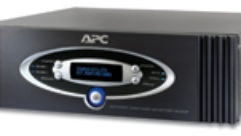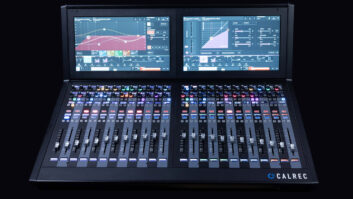
Not Your Typical Moscow Install
Oct 8, 2010 12:00 PM,
By George Petersen

Multiple M10 hanging points on the One Systems 212IM-100 speakers simplified the installation process.
With cold weather coming on, this seems a good time to look at take a detailed look at a system intended for year-round operation under extreme weather conditions. A few months ago, for the 65th anniversary of the end of World War II, the Russian government decided to upgrade the obsolete speech-only PA system at Victory Memorial Complex on Moscow’s Poklonnaya Hill.
The area is rich in Russian military history, set around the hill where—in 1812—Napoleon surrounded Moscow and waited for a surrender that never happened. The memorial includes a museum and a mile-long walkway with rides, colored fountains, restaurants, cafés, and a military theme park displaying vintage military tanks and other equipment. A highlight on the grounds is a 468ft. obelisk representing the 1,420 days of the war, topped with two bronze cherubs and a 3-ton statue of Nike, the goddess of victory.
It’s an impressive memorial, yet the existing sound system was hardly up to par with the surrounding splendor. The system bid went to Moscow’s Avallon, which understood both the enormity of the project as well as the need for an high-fidelity system that could hold up to the area’s frequent summer thunderstorms and heavy winter snows. Certainly, weatherproofing was a key priority.
Having previously spec’d Nashville, Tenn.-based One Systems products for other installations, Avallon selected 20 212IM-100 speakers driven by five Dynacord DSA 8410 4-channel Class-D amplifiers for the job. The 212IM-100s are two-way speakers, each with dual 12in. woofers matched through a passive (biamp-switchable) 1kHz crossover to a large-format 3.25in., titanium-diaphragm compression driver on a rotatable 60×40-degree horn. But there’s nothing off-the-shelf in this speaker. The patent-pending HF driver uses an Equivalent Throat design that allows the radiation pattern to be controlled by the phase plug summation plane rather than the conventional exit diameter at the end of the driver structure. The woofers have a unique voice coil wind on the inside of the voice coil support structure, said to result in increased thermal transfer for reduced power compression and higher reliability.
Related Links

Neutrik: 35 Years of Innovation
Bernhard Weingartner founded Neutrik in 1975 with two employees in a barn in Liechtenstein…

It was just two decades ago–July 26, 1990–that President George H. W. Bush signed the Americans with Disabilities Act (ADA) into law. In terms of removing barriers and opening new areas of accessibility to millions of Americans, it was truly a landmark day…

According to Alice Cooper’s classic 1972 anthem, “School’s out for summer.” While this might be true for millions of schoolkids, it’s prime time for integrators…
Ideally suited for tough environmental conditions, the enclosure is a tough, injection-molded copolymer resin that’s resistant to high UV exposure levels. The three-layer metal grille’s rain-shield design offers direct rain protection for the drivers, and the bass reflex vents are designed to allow any moisture to drain from the inside of the enclosure. Both cabinet and grille have an IEC 529 IP45 rating against solid object penetration or water from any direction.
Another issue involved wiring. The installation required some 4500ft. of cabling, and the speakers are placed on existing poles throughout the complex, ranging from 164ft. to 263ft. apart. AC power was not available at every pole, so powered speakers were not an option. Running the pole-to-pole wiring above ground not only kept line distances to a minimum, but also offered some protection from hazards such as animals and ground freezes. Given the great distances between the power amplifiers and the speakers, the potential line losses could have been severe, but the speakers handled the 100V feeds without a hiccup.










